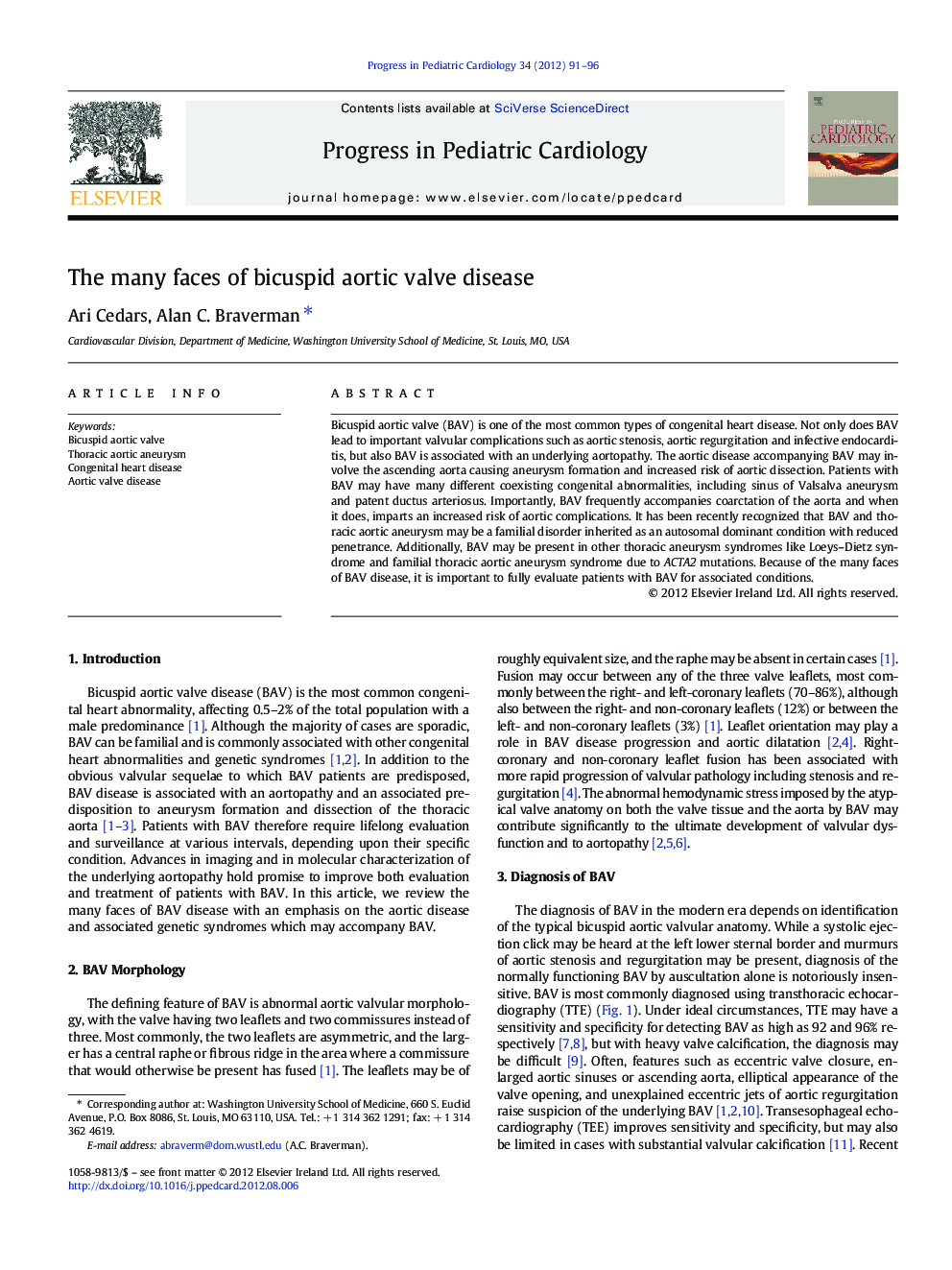| Article ID | Journal | Published Year | Pages | File Type |
|---|---|---|---|---|
| 3007356 | Progress in Pediatric Cardiology | 2012 | 6 Pages |
Bicuspid aortic valve (BAV) is one of the most common types of congenital heart disease. Not only does BAV lead to important valvular complications such as aortic stenosis, aortic regurgitation and infective endocarditis, but also BAV is associated with an underlying aortopathy. The aortic disease accompanying BAV may involve the ascending aorta causing aneurysm formation and increased risk of aortic dissection. Patients with BAV may have many different coexisting congenital abnormalities, including sinus of Valsalva aneurysm and patent ductus arteriosus. Importantly, BAV frequently accompanies coarctation of the aorta and when it does, imparts an increased risk of aortic complications. It has been recently recognized that BAV and thoracic aortic aneurysm may be a familial disorder inherited as an autosomal dominant condition with reduced penetrance. Additionally, BAV may be present in other thoracic aneurysm syndromes like Loeys–Dietz syndrome and familial thoracic aortic aneurysm syndrome due to ACTA2 mutations. Because of the many faces of BAV disease, it is important to fully evaluate patients with BAV for associated conditions.
